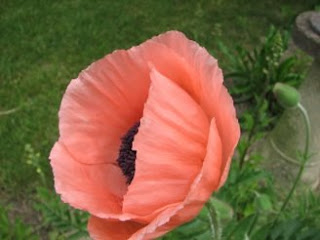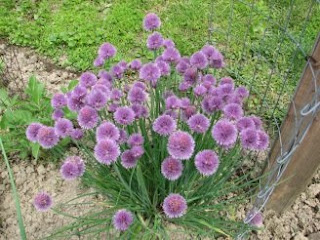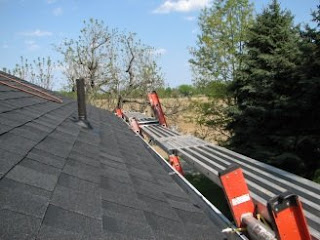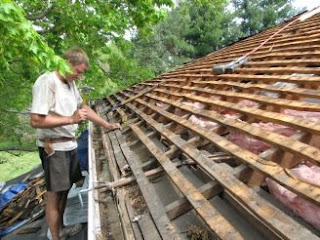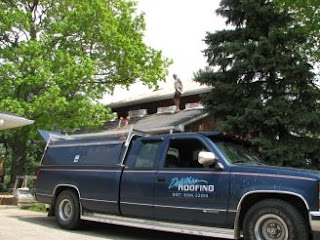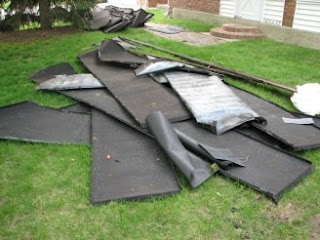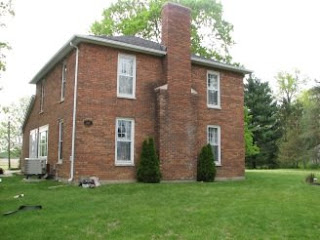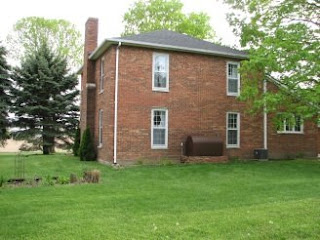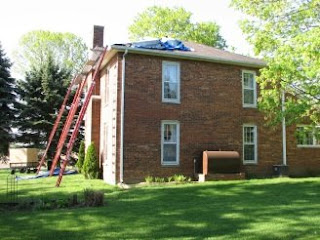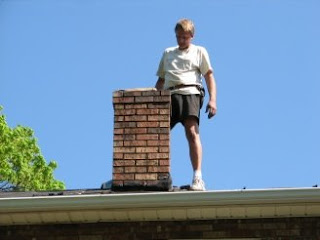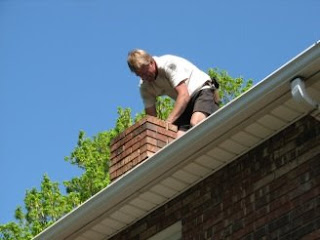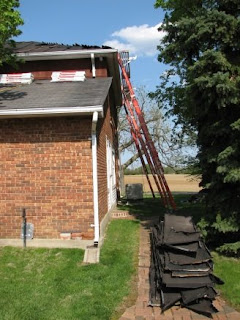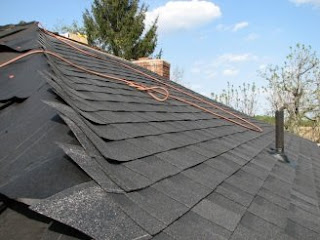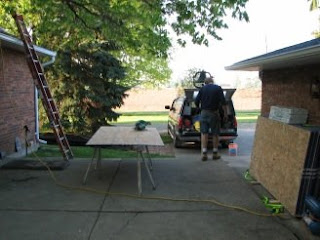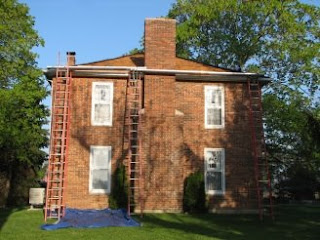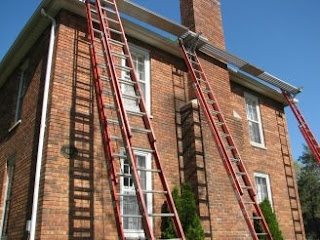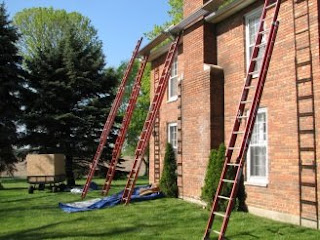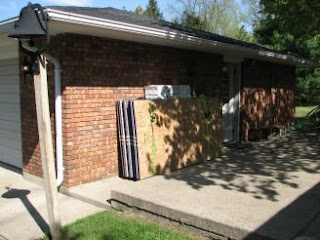Each year we wait for the return of a female hummingbird - or, at least we think it's the same one. In any case, we place the feeder up in early May, anticipating her arrival from far off in the south. We record the date each year. We'll be doing dishes - or working in the kitchen - and finally see her tiny form darting around the feeder. And when that happens, we begin the next step: looking for where she is building her nestn this year. That's not an easy chore; there are plenty of trees around our yard and we wouldn't have a chance but for one thing: she always uses the
same maple tree.

As you can see in the picture above, I've located her again. Actually I heard her working - that familiar hummmm - while hanging a birdhouse in the maple. I backed away as soon as I heard it, trying to see her at work. But I saw nothing.
Then, one day early this week, I happened to walk to the second floor bathroom window and there she was - almost completed nest and all - not more than 15' away from the glass. Since then the nest has been finished and I assume she's laid her eggs because she's very careful not to be gone very long. Also I can watch her reach down with her long bill and work on turning the eggs.
Now we're not quite high enough to see down into the nest but we're otherwise in the perfect spot to watch the process of hatching the babies.
The last thing we do each evening when the light begins to ebb is to walk near the window, look out to the nest and see that she has already bedded down for the night. By early morning, as soon as the sun begins striking the nest, she's busily at work. Though she leaves the nest often, she is never gone long.
We have the perfect front row seat.
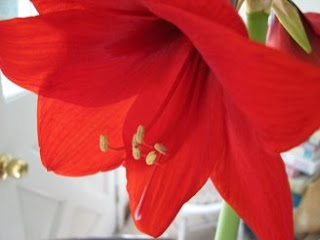 It might seem strange to see an amaryllis blooming on this blog, especially in May, but my Christmas present many years ago has chosen this late date for its annual display. Getting an amaryllis to bloom year after year has a trick to it, something a professional gardener explained to me. If you start it again in the fall (watering the bulb in the dark; we use the cool basement) and the only thing the bulb puts forth is leaves, cut them off! Put the bulb back into the cool, dark place and try again. An amaryllis will get the point quickly: it's the bloom you are after. It's something you expect.
It might seem strange to see an amaryllis blooming on this blog, especially in May, but my Christmas present many years ago has chosen this late date for its annual display. Getting an amaryllis to bloom year after year has a trick to it, something a professional gardener explained to me. If you start it again in the fall (watering the bulb in the dark; we use the cool basement) and the only thing the bulb puts forth is leaves, cut them off! Put the bulb back into the cool, dark place and try again. An amaryllis will get the point quickly: it's the bloom you are after. It's something you expect.
Now, the summer months ahead will find the plant outside in the sun and with a pinch of nitrogen fertilizer to give it some strength. In the fall, cut the leaves back, give the bulb a couple of months to rest (place it on a newspaper in a cool, dry spot). When you want it to bloom (begin in November for a Christmas bloom), pot it, water it, and watch it grow.
It may be May if you have to argue with it but telling a bulb who is in charge is easy, if you have sharp sheers.

